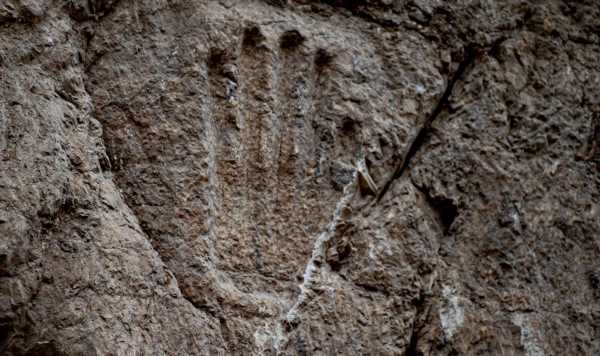Stonehenge: Osteoarchaeologist discusses find of human bones
We use your sign-up to provide content in ways you’ve consented to and to improve our understanding of you. This may include adverts from us and 3rd parties based on our understanding. You can unsubscribe at any time. More info
Archaeologists have been left baffled by the meaning of a mysterious hand imprint carved left a dry moat that encircled Jerusalem’s Old City 1,000 years ago. The imprint was found during excavations around an infrastructure project involving a road expansion near Herod’s Gate. Initially, this unveiled part of the ancient moat. Archaeologists are pretty certain that the moat’s intended purpose was to prevent crusaders from invading the holy city. What they are less sure about is the hand imprinted onto the ancient slab of stone wall.
The Israeli Antiquities Authority (IAA) says the moat dates from the from the 10th century or possibly even earlier.
IAA excavation director Zubair Adawi said: “People are not aware that this busy street is built directly over a huge moat, an enormous rock-hewn channel.
“Its function was to prevent the enemy besieging Jerusalem from approaching the walls and breaking into the city.”
While the moats that encircle many European castles are still deep bodies of water, the moat in Jerusalem was left dry However, its depth and breadth would have helped to slow down approaching invaders.


The Crusaders are thought to have needed five weeks to cross the moat, despite it being hewn into the stone around the Old City. It stretches 33 feet wide and is between six to 22 feet deep.
In 1099 the crusaders got past the moat and managed to breach the city’s walls and defences, which can still be seen today and were built in the sixteenth century by Turkish Ottoman Sultan Suleiman I the Magnificent.
However, this was not without concerted efforts by Jewish and Muslim defenders fighting back against the invaders.
According to Dr Amit Re’em, Jerusalem Region Director at IAA, these defences would have been a significant challenge to breach.

He said: “In the eras of knights’ battles, swords, arrows, and charging cavalry, the fortifications of Jerusalem were formidable and complex, comprising walls and elements to hold off large armies storming the city.
“Armies trying to capture the city in the Middle Ages had to cross the deep moat and behind it two additional thick fortification walls, while the defenders of the city on the walls rained fire and sulfur down on them.”
He added: “As if this wasn’t enough, there were secret tunnels in the fortifications, some of them uncovered by the IAA archaeologists in previous excavations, whereby the city defenders could emerge into the moat and attack the enemy by surprise, and then disappear back into the city.”
But while a lot of information is known about the moat, the researchers said the hand imprinted on it remains a “mystery”.
DON’T MISS
Green Comet returns to Earth’s skies for first time in 50,000 years [REVEAL]
Brits to be paid £10 to stop using energy-guzzling appliances tonight [REPORT]
Energy supply will be ‘tighter’ tonight but Brits can be paid to help [INSIGHT]


Mr Adawi said that it’s still a “mystery”, despite the team trying solve it. It appears progress on that front has so far not been made.
The researchers said in a statement: “To date, archaeologists have not deciphered the meaning of this carving. Does it symbolise something? Does it point to a specific nearby element? Or is it just a local prank? Time may tell.”
The Crusades were some of the most brutal battles to have taken place towards the end of the Middle Ages. They were a series of religious wars fought between 1095 and 1291, in which Christian invaders tried to claim territory in the East.
Their purpose was also to free eastern Christians from Muslim rule and capture the Holy Sepulcher from the Muslims, a church in the Christian Quarter of the Old City of Jerusalem.
Source: Read Full Article
